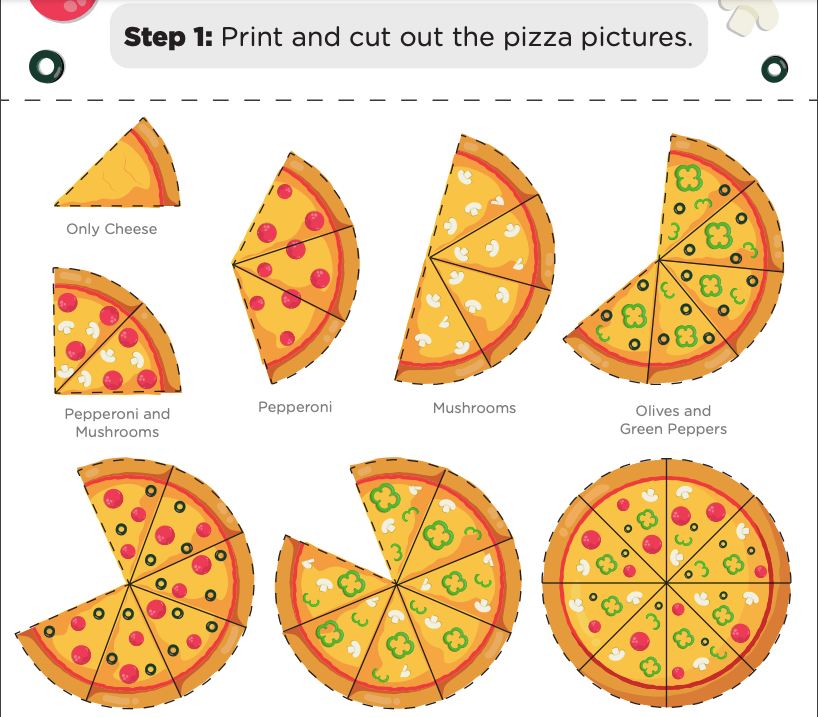- 1. Create a Supportive Learning Environment
- 2. Identify Individual Learning Styles
- 3. Use Real-Life Examples
- 4. Provide Additional Resources
- 5. Encourage Questions and Discussions
- 6. Offer Extra Help
- 7. Break Down Complex Concepts
- 8. Promote Collaborative Learning
- 9. Regular Assessments and Feedback
- 10. Address Math Anxiety
Mathematics – it’s a subject that has haunted many of us during our school days, and for some, the haunting never seems to end. But why is math so hard? Why does it strike fear into the hearts of students and adults alike? According to the Child Mind Institute, there’s a prevailing sentiment in America that math is crucial, especially with the emphasis on STEM (science, technology, engineering, and math) fields. However, many also admit, “I’m terrible at math” or “math is hard” This dichotomy — the importance of math and the belief that proficiency in it is rare — can induce anxiety in students.
Math & ELA | PreK To Grade 5
Kids see fun.
You see real learning outcomes.
Watch your kids fall in love with math & reading through our scientifically designed curriculum.
Parents, try for free Teachers, use for free
In this blog, we will discuss – 1. Why is math so hard? 2. Focus on practical tips and strategies for teachers to support their students in conquering math-related challenges.
5 Common Challenges Faced by Students: Why Am I So Bad at Math?

Mathematics, often regarded as a formidable subject, can be a source of frustration for many students. The struggles faced by learners are real, but they are not insurmountable. In this section, we will explore common challenges that students encounter in their mathematical journey.
1. Fear and Math Anxiety
Math anxiety, that sinking feeling in the pit of the stomach when faced with numbers and equations, is a common hurdle. As Matthew Pagirsky, points out, “Anxiety really can impact…attention, memory, and processing speed.”
2. Lack of Basic Foundation
Imagine trying to build a towering structure without a solid foundation. Similarly, understanding advanced math concepts without a strong grasp of the basics can be a daunting task. A study from the University of Akron found that many ninth and tenth graders struggled with elementary concepts like fractions and ratios. This highlights the critical need for a solid foundational understanding in early education.
3. Complexity and Abstraction
Mathematics has a way of becoming increasingly abstract and complex as students progress through their education. Concepts like calculus or algebra can seem like an impenetrable maze to those unfamiliar with them.
To demystify math, break down these complex ideas into simpler components. Use relatable examples to illustrate abstract concepts. By showing your students that even the most challenging topics have practical applications, you can make math more approachable.
4. Lack of Interest or Motivation
Low motivation can turn math into a dull and uninspiring subject. Many students wonder, “Why is math so hard?” when they lack enthusiasm for the subject. As a teacher, you have the power to reignite their interest.
Connect math to real-life situations and careers. Show your students the exciting possibilities math offers. Sometimes, a change in perspective is all it takes to rekindle the math flame within them.
5. Poor Problem-solving Skills
Some students struggle because they lack effective problem-solving skills. They may find themselves stuck on word problems or mathematical puzzles.
In this section, we’ve explored the common hurdles that students face when dealing with math. These challenges are real, but they are not unbeatable. As a teacher, you have the power to guide your students past these obstacles, making math more accessible and enjoyable for all.
Related Reading: How to Help Kids with Math: 6 Innovating Approaches
11 Ways a Teacher Can Help Students in Overcoming Math Struggles

In our daily lives, we encounter math in ways we might not even realize. From calculating the right tip at a restaurant to managing budgets and measuring ingredients for your favorite recipes, math is an essential tool. It’s not just a school subject; it’s a life skill. Teaching mathematics can be a rewarding yet challenging endeavor. It’s not uncommon for teachers to witness their students struggling with math concepts, and as educators, you play a pivotal role in helping them overcome these difficulties.
Let’s dive right in and explore eleven practical strategies to make math more accessible and enjoyable for your students.
1. Create a Supportive Learning Environment

In the world of math, a positive classroom atmosphere is like a ray of sunshine on a rainy day for students facing difficulties with mathematics. It makes a significant difference. When students feel safe to ask questions, make mistakes, and share their thoughts, they become more engaged in learning. Encourage open communication and foster a sense of belonging in your classroom.
What you can do: Begin each math class with a “Math Success Story.” Share a short anecdote about a person who faced math challenges but overcame them. This not only motivates students but also sets a positive tone for the lesson.
Related Reading: Best Qualities of a Good Maths Teacher
2. Identify Individual Learning Styles

Just as each person has a unique fingerprint, they also have a unique learning style. Some students are visual learners, while others prefer hands-on activities or auditory explanations. Pay attention to these preferences and adapt your teaching methods to cater to different struggling students in math.
What you can do: During your math lessons, rotate between different teaching methods. For instance, use visual aids like charts and diagrams for one lesson, followed by group activities or discussions in the next. Observe how students respond and adapt your teaching accordingly.
3. Use Real-Life Examples

Mathematics isn’t an abstract concept confined to textbooks; it’s a tool we use in everyday life. Show your students how math connects to real-life situations, helping them overcome math struggles. Calculate the cost of groceries, measure the angle of sunlight, or explore the math behind their favorite video game. This can be particularly helpful for those wondering, “why do I not understand math?”
What you can do: When teaching fractions, bring in a pizza and ask students to divide it into slices. Show them how fractions are used in everyday situations, like sharing pizza with friends. This hands-on approach makes abstract concepts more tangible.
4. Provide Additional Resources

Your classroom is just one source of knowledge. Mention resources like textbooks, online tutorials, and math apps that can act as valuable companions in a student’s journey when struggling with math. These tools provide extra practice and different perspectives to reinforce learning.
What you can do: In today’s digital age, leveraging online resources can be a game-changer for students. Consider integrating educational apps like SplashLearn into your classroom. SplashLearn offers a vast library of interactive math games for kids from Pre-K to Grade 5. These engaging games make learning math fun and accessible. For instance, if you’re teaching addition to first-graders, you can assign a SplashLearn game that allows them to practice adding numbers within a fun and interactive digital environment. The instant feedback and progress tracking provided by such apps help students reinforce their math skills independently, making learning an enjoyable experience both in and out of the classroom.
5. Encourage Questions and Discussions

Questions are like the stepping stones to understanding for students facing challenges in math. Encourage your students to ask questions freely. Create a culture where curiosity is celebrated, and discussions are encouraged. When students feel their voices are heard, they become active participants in their own learning.
What you can do: Dedicate a portion of each class to a “Math Question of the Day.” Encourage students to submit questions anonymously if they prefer. Discuss these questions as a class, fostering a culture where no question is too small or insignificant.
6. Offer Extra Help

Recognize that some students may need additional support when dealing with math struggles. Whether it’s through one-on-one tutoring or extra office hours, offering extra help can make a world of difference. A little extra time spent can bridge the gap for struggling students.
What you can do: Set aside specific office hours for one-on-one or small group tutoring sessions. Let students know that these sessions are available for anyone who needs additional support. This individualized attention can provide significant assistance to struggling students.
7. Break Down Complex Concepts

Complex math concepts can feel like a tangled web of confusion. Your role is to simplify and break them down into manageable steps. Show your students the path to understanding, one step at a time.
What you can do: When introducing multiplication to elementary students, start with a simple concept like repeated addition. Begin by illustrating that multiplication is a faster way to add multiple groups of the same number. Use concrete objects like apples or building blocks to demonstrate this concept. Gradually, introduce multiplication tables one at a time, starting with the 2s and 5s. Encourage students to practice with visual aids like multiplication charts and colorful arrays, making the learning process interactive and engaging
8. Promote Collaborative Learning

Two heads are often better than one. Encourage group work and peer teaching in your classroom. When students collaborate, they not only learn from you but also from each other. It’s like building a math community where everyone contributes to the learning process.
What you can do: Assign group projects that require students to solve real-world math problems together. For instance, have them plan a budget for a hypothetical trip or design a math-based board game. Collaboration encourages peer teaching and shared problem-solving.
9. Regular Assessments and Feedback

Regular checkpoints help students gauge their progress. Use assessments to identify areas that need improvement and provide timely feedback. This feedback loop is like a GPS guiding them toward mastery.
What you can do: Conduct weekly quizzes or short assessments to track student progress. Afterward, provide detailed feedback highlighting areas of improvement and specific recommendations for each student. This ongoing assessment and feedback loop guide students toward mastery.
Another option is to use a digital assessment tool like SplashLearn that provides instant feedback on quizzes or practice exercises. After students complete a quiz, they can immediately see their results and receive explanations for incorrect answers, allowing them to learn from their mistakes.
10. Address Math Anxiety

Math anxiety can be a formidable foe. Equip your students with strategies to cope with it. Teach relaxation techniques, offer encouragement, and create a low-stress learning environment. You’ll be helping them face their fears head-on.
What you can do: Start the school year by discussing math anxiety openly with your students. Share relaxation techniques, such as deep breathing exercises, and encourage them to use these techniques during challenging math tasks. Normalize seeking help when needed.
Related Reading: Strategies to Bring Out Mindfulness for Kids
11. Celebrate Small Achievements

In the quest to conquer math, every small victory counts. Acknowledge and celebrate your students’ progress, no matter how minor it may seem. Positive reinforcement boosts their confidence and keeps them motivated to keep going.
What you can do: Create a “Math Achievement Wall” in your classroom. Whenever a student demonstrates progress, celebrate it by adding their name and achievement to the wall. This public recognition can boost their confidence and motivate others.
In this section, we’ve explored eleven practical strategies for teachers to support students struggling with math. By implementing these approaches, you can transform your classroom into a place where math becomes less of a challenge and more of an exciting journey towards understanding.
Related Reading: How to Get Better at Math in 10 Effective Steps
Conclusion
In the world of education, few subjects invoke as much trepidation and uncertainty as mathematics. If you are still asking the world’s biggest question – “Why is math so hard?”, you now have an answer to it. All you need is to put these tools and strategies that we have discussed into practice.
Remember, as teachers, you are not just math educators; you are the guides who help students overcome their math challenges and discover the joy of learning. Together, let’s transform difficult math into an exciting adventure of understanding and achievement.
Frequently Asked Questions (FAQs)
What are the hardest math concepts for students, especially in Pre-K to Grade 5?
For younger students, concepts like fractions, long division, and understanding place value can often be particularly challenging. These topics lay the foundation for more complex math in later grades and may require additional attention and support
How can parents support their children's math learning at home?
Parents can support their children by practicing math in daily activities, offering encouragement, and seeking help from teachers or online resources when needed.
How can I overcome my own fear of math as a teacher?
Overcoming math anxiety as a teacher involves seeking professional development, collaborating with colleagues, and adopting a growth mindset towards math instruction.
























